guest worker program
description: program where foreign workers temporarily reside and work in a host country
33 results
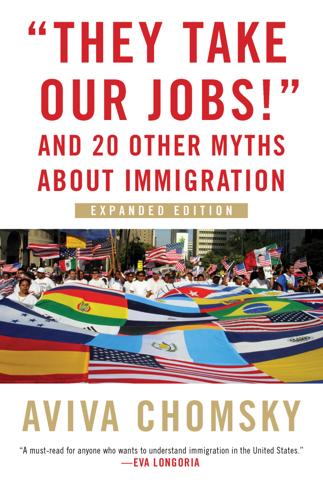
"They Take Our Jobs!": And 20 Other Myths About Immigration
by
Aviva Chomsky
Published 23 Apr 2018
Most immigrants’ rights groups argue strongly for the need for a comprehensive reform. Some have come out in support of the Senate bill, believing that it is the best that can be hoped for in the current political climate.1 Others object to the punitive requirements for legalization, and to the notion of a new guest-worker program.2 Unions are similarly divided. The AFL-CIO opposes the Senate plan, arguing that guest-worker programs by their very nature create a group of people who are not full citizens, and who are easily exploited and abused. “It creates a permanent underclass of workers who are unable to fully participate in democracy,” said AFL-CIO president John Sweeney.
…
The Change to Win Coalition, which split from the AFL-CIO in 2005 and to which the SEIU now belongs, has not taken an official position on the matter. But some SEIU members disagreed so strongly with their union’s position that they formed a new organization called “No Worker Is Illegal” to press the SEIU to revise its stance. “Guest-worker programs, further militarization of the border, and employer sanctions hurt all workers,” they explain.4 Others point out that a temporary guest-worker program is at odds with the jobs that migrant workers are filling. Only one in ten Mexican workers in the United States holds a temporary or seasonal job. “Rotating temporary workers through permanent jobs is simply not sound policy, and invites non-compliance with the terms of the programme by both migrants and employers,” notes immigration specialist Wayne Cornelius.5 Meanwhile, states and local communities around the United States are discussing or implementing anti-immigrant regulations.
…
It also helps to explain why deregulation of the economy, and even why increasing repression and criminalization of immigrants, actually creates greater demand for immigrant workers. In a democracy, it’s hard to justify deliberately keeping part of the population poor and excluded by legal means. Racial slavery was one means used to do precisely that until the 1860s. Temporary guest-worker programs, Jim Crow laws, and other forms of legalized discrimination—in the North as well as the South—were other methods that kept a supply of workers without rights available until the 1960s. In the western United States, legal restrictions against U.S. citizens of Mexican origin served the same purpose as Jim Crow did in the South.
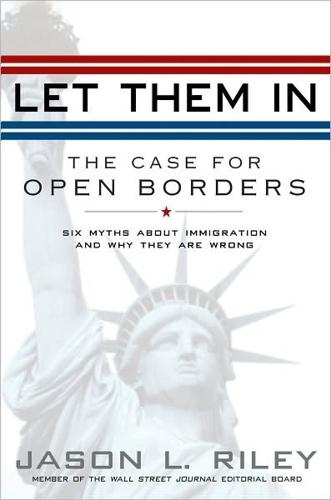
Let Them In: The Case for Open Borders
by
Jason L. Riley
Published 14 May 2008
It would also alleviate pressure on the border and free up our overburdened patrols to track down terrorists, drug dealers, and other serious threats to our welfare. Unfortunately, as things stand, our border security officers spend most of their time chasing migrants who come north to mow our lawns and burp our babies. A guest-worker program for such individuals would help regulate the labor flow and isolate the criminals, thus making us much safer than any wall along the Rio Grande. CHAPTER ONE POPULATION: DOOM AND DEMOGRAPHY Perhaps this is the first instance in which those with their pants up are going to be caught by those with their pants down!
…
In late 2005, the House had passed immigration legislation that, among other things, expanded physical barriers along the Mexican border, made unlawful presence in the United States a felony, and increased sanctions on businesses who hire illegal workers. The following spring, the Senate passed its own bill, which was more to Bush’s liking because it included not only more enforcement measures but also a guest-worker program for future cross-border labor flows. In addition, the Senate bill allowed illegal aliens in the United States to earn legal status without first returning to their home countries if they met certain requirements—a provision that got the entire Senate bill denounced by opponents as an offer of “amnesty.”
…
But the Republican leadership wasn’t about to let such minor details stand in the way of playing up an issue that is perennially ripe for demagoguery. Earlier in the spring the Senate had passed an immigration bill along the lines of what the White House wanted. The legislation included more enforcement measures but also a guest-worker program with an eye to the future labor needs of the U.S. economy. In addition, the Senate bill allowed the estimated 12 million illegal aliens in the United States to earn legal status if they met certain requirements. But rather than conferencing with the Senate to hash out a compromise, the House decided to spend the spring and summer of 2006 sabotaging the bill by denouncing it as “amnesty.”

Melting Pot or Civil War?: A Son of Immigrants Makes the Case Against Open Borders
by
Reihan Salam
Published 24 Sep 2018
The first and most obvious is that a program like the one Weyl and Posner envision would have profound consequences for political equality, as they would readily acknowledge. In the past, Weyl and Posner have called for mass guest-worker programs precisely because they recognize that U.S. citizens are reluctant to open the doors to citizenship to all potential migrants.21 And so they see a system of temporary labor visas as a way to give the global poor access to the U.S. labor market without also granting them full membership in the American polity. Though we already do this on a small scale, guest-worker programs that would welcome tens of millions would create new cleavages in our society. Assume for the moment that our main motivation for increasing low-skill immigration were to improve the relative status of low-skill natives, on the grounds that we don’t want low-skill natives to have to take on low-wage manual jobs.
…
And there is a good reason for that. As the political scientist Morris Levy suggested to The New York Times, Americans “dislike the idea of a permanent second-class citizen,” as it cuts against “a core set of values that people think of as really elemental to being American.”52 The United States does have long-term guest-worker programs, to be sure, but they typically give guest workers the right to bring over their dependents. Overstaying guest-worker visas is common, and, of course, people on temporary visas often have citizen children. The babies of low-skill immigrants are as much our babies as the babies of high-skill immigrants.
…
While Sweden is trying to nudge its employers to adopt more labor-intensive business models, Singapore is doing the opposite.5 Like Sweden, Singapore is one of the world’s richest countries, and its citizens are also among the best educated in the world. Yet the city-state also makes use of a great deal of low-skill labor via its massive guest-worker program. Rather than taking in refugees, Singapore takes in hundreds of thousands of temporary labor migrants, who drive its taxis, unclog its toilets, and dig its tunnels. Singapore’s government rigorously enforces its immigration laws, and temporary labor migrants are truly temporary. There is zero expectation that these migrants will one day be welcomed into citizenship, unless they belong to the ultra-elite minority of highly educated expats.
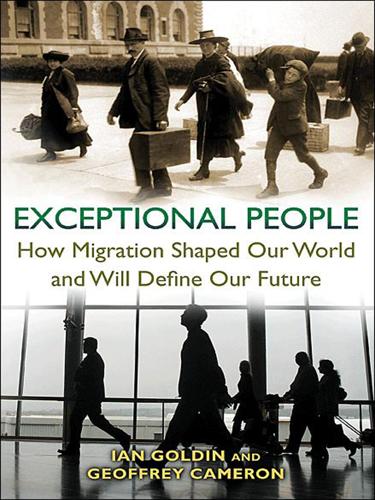
Exceptional People: How Migration Shaped Our World and Will Define Our Future
by
Ian Goldin
,
Geoffrey Cameron
and
Meera Balarajan
Published 20 Dec 2010
In this new era of globalization, free and forced migrants were the causes and consequences of economic growth. The twentieth century has witnessed the proliferation of states and the extension of government bureaucracies into the management of migration. The introduction of passports, strict border controls, immigration quotas, guest-worker programs, and the distribution of rights on the basis of nationality are all features of the new era of highly managed migration. Passports and border controls are relatively new innovations, and their increasingly strict enforcement in the twentieth century dramatically changed the dynamics of migration.
…
A similar number of Africans moved to France from its former colonies by 1972.88 The United States also loosened it national origins immigration restrictions in 1965, leading to a surge in migration to the United States from Asia and Latin America.89 In the United States, the need for additional labor to produce “food to win the war” during World War II led Congress to introduce the Bracero guest-worker program to bring in migrants from Mexico and Central America to work as temporary agricultural laborers. During the period from 1943-1965, 4.6 million “braceros” from Mexico were admitted on temporary work permits to do farm work, many of them returning year after year.90 Britain required foreign migrants to fill labor shortages after the war, and as early as 1946, it had identified displaced persons as a possible solution.
…
Initially, Britain recruited about 90,000 (primarily male) workers from refugee camps and Italy through a European Voluntary Worker scheme. 91 Workers were tied to a specific job, they could not bring their families to join them, and they could face summary deportation in cases of indiscipline.92 Over 345,000 Europeans were ultimately recruited on restricted work permits, but the continued shortage of labor meant that British recruiters searched farther afield. By 1958, 115,000 West Indians, 55,000 Indians, 25,000 West Africans, and 10,000 Cypriots had been brought to the UK. West Germany's temporary guest-worker program, called Gastarbeiter, became one of Europe's largest and most sophisticated. Germany signed bilateral agreements with Italy (1955), Greece (1960), Turkey (1961), Portugal (1964), and Yugoslavia (1968) to recruit unskilled labor for jobs in the rapidly growing industrial sector. The Federal Labour Office set up recruitment offices in these countries, and they would test occupational skills, provide medical examinations, screen police records, and transport groups to Germany—after which, employers would provide initial accommodation.93 Stephen Castles and Mark Miller comment that under the Gastarbeiter program, “German policies conceived migrant workers as temporary labour units, which could be recruited, utilized and sent away again as employers required.”94 Like other European guest-worker programs, however, many of the initially “temporary” migrants eventually had families and established roots in Germany.

The New Class War: Saving Democracy From the Metropolitan Elite
by
Michael Lind
Published 20 Feb 2020
The most fundamental labor right is the right to quit a job and find another, without needing to leave the country. For this reason, indentured servitude in the form of guest worker programs, which bind a worker to a single employer as a condition for working in a country, is a political abomination. Guest worker programs threaten all workers in the sectors in which they are permitted by allowing employers to hire bound serfs instead of workers who can respond to mistreatment or low pay by quitting. For this reason, all or most temporary guest worker programs that allow employers to hire foreign nationals as indentured servants should be abolished. If foreign nationals, other than a tiny number of foreign orchestra conductors and visiting professors, are allowed to work at all in a country, they should have the status described in the US as “legal permanent residents” (green card holders).
…
Instead of bringing jobs to low-wage workers abroad, employers can encourage the importation of low-wage workers to their home countries to suppress wages, deter unionization, and weaken the bargaining power of native and immigrant workers alike. Some Western countries have had formal policies of encouraging unskilled, low-wage immigration, like the US with its exploitative guest worker programs in agriculture and West Germany with its Turkish Gastarbeiter (guest workers). But for the most part, unskilled immigration has been the incidental result of other policies. In the United States, most legal unskilled immigrants have been low-income Mexicans and Central Americans who come on the basis of US family reunification laws, in addition to 12 million or so illegal immigrants, mostly from the same nearby countries.
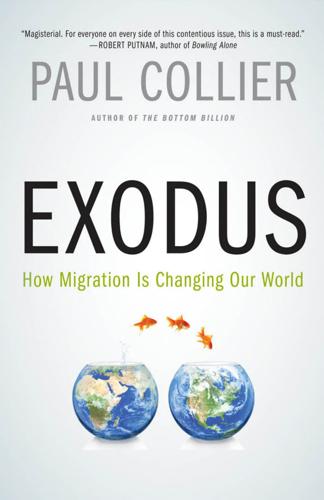
Exodus: How Migration Is Changing Our World
by
Paul Collier
Published 30 Sep 2013
There is only one way in which virtually all social effects can be avoided, leaving only the economic effects. That is if immigrants are prevented from integrating in any way into the society other than as workers: that is, in the German euphemism, “guest workers.” A genuine guest-worker program delivers the labor markets effect of migration and nothing else. Some societies, most notably in the Middle East, have chosen to run very substantial guest-worker programs. Since these societies are small and rich, the attractions of such a migration policy to the indigenous population are substantial: they get others to do the work without the composition of the society being changed.
…
However, although Dubai exploits the opportunity created by global inequality, it does not cause that inequality. On the contrary, the jobs that Dubai provides help poor people. In essence, the enthusiasm of economists for migration is enthusiasm for the guest-worker model. Commonly the espousal of guest-worker programs is implicit, since all the other effects of migration are ignored. But Professor Alan Winters, a distinguished economist who has specialized in migration, has had the intellectual honesty to advocate the guest-worker model explicitly. Specifically, he proposes that all the high-wage countries should encourage the mass temporary immigration of unskilled workers from poor countries.13 In economic terms it is hard to fault this prescription: it would indeed generate global economic gains and benefit almost everyone involved.
…
There is as yet no comprehensive quantitatively usable version of the myriad of complex changes in rules and practices, country by country. As a result, testing a theory of how policy affects remittances has to use proxies for policy. For example, one proxy for the restrictiveness of migration policy is whether the country has a formal guest-worker program, since guest workers have no right to bring in relatives. Another is the sex ratio of migrants, since this is likely to reflect whether wives and mothers can be brought in. With these caveats, there is solid evidence that remittances to most countries would be increased were the migration policies of host countries somewhat more restrictive, in the sense of not letting in the relatives of migrants.
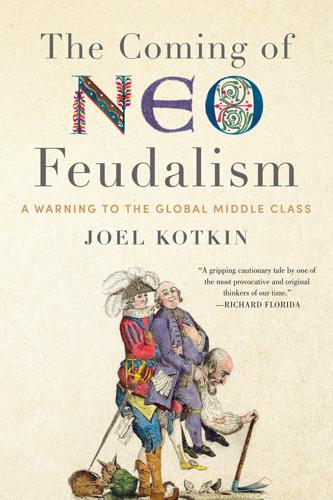
The Coming of Neo-Feudalism: A Warning to the Global Middle Class
by
Joel Kotkin
Published 11 May 2020
Wagner, “Number of General Motors employees between FY 2010 and FY 2018,” Statista, February 2019, https://www.statista.com/statistics/239843/employees-of-general-motors/; Lockheed Martin, “About Lockheed Martin,” https://www.lockheedmartin.com/en-us/who-we-are.html; Jan Conway, “Number of Employees Kroger 2014–2018,” Statista, April 2019, https://www.statista.com/statistics/717646/kroger-number-employees/; Home Depot, “About Home Depot,” https://corporate.homedepot.com/about. 9 Nikhil Swaminathan, “Inside the Growing Guest Worker Program Trapping Indian Students in Virtual Servitude,” Mother Jones, September/October 2017, http://www.motherjones.com/politics/2017/09/inside-the-growing-guest-worker-program-trapping-indian-students-in-virtual-servitude. 10 Annalee Newitz, “Mark Zuckerberg’s manifesto is a political trainwreck,” Ars Technica, February 18, 2017, https://arstechnica.com/staff/2017/02/op-ed-mark-zuckerbergs-manifesto-is-a-political-trainwreck/; Ezra Klein, “Mark Zuckerberg’s theory of human history,” Vox, February 18, 2017, http://www.vox.com/new-money/2017/2/18/14653542/mark-zuckerberg-facebook-manifesto-sapiens. 11 Gregory Ferenstein, “The Disrupters,” City Journal, Winter 2017, https://www.city-journal.org/html/disrupters-14950.html. 12 Gregory Ferenstein, “A Lot of Billionaires Are Giving to Democrats.
…
psid=bwGGn; Aria Bendix, “San Francisco’s homelessness crisis is so bad, people appear to be using poop to graffiti the sidewalks,” SFGate, November 20, 2018, https://www.sfgate.com/technology/businessinsider/article/Meet-the-guy-in-charge-of-tackling-San-8331836.php. 27 Chris Brenner and Manuel Pastor, Equity, Growth, and Community: What the Nation Can Learn from America’s Metro Areas (Oakland: University of California Press, 2015), 167. 28 Rachel Massaro, “Silicon Valley Index,” Joint Venture, 2016, https://jointventure.org/images/stories/pdf; Dylan Wittenberg, “These Bay Area FinTech Companies Are Revolutionizing the Lending Space,” Benzinga, July 25, 2017, https://www.benzinga.com/fintech/17/07/9816489/these-bay-area-fintech-companies-are-revolutionizing-the-lending-space/index2016.pdf. 29 Issie Lapowsky, “Silicon Valley’s Biggest Worry Should Be Inequality, Not a Bubble,” Wired, February 4, 2015, https://www.wired.com/2015/02/silicon-valley-inequality-study/. 30 Gabriel Metcalf, “Four Future Scenarios for the San Francisco Bay Area,” SPUR Regional Strategy, August 2018, https://www.spur.org/sites/default/files/publications_pdfs/SPUR_Future_Scenarios_for_the_SF_Bay_Area.pdf; Alex Thomas, “The Demographics of Poverty in Santa Clara County,” New Geography, January 10, 2017, https://www.newgeography.com/content/005501-the-demographics-poverty-santa-clara-county; Jeff Desjardins, “Which Companies Make the Most Revenue Per Employee?” Visual Capitalist, June 15, 2017, http://www.visualcapitalist.com/companies-revenue-per-employee/. 31 Nikhil Swaminathan, “Inside the Growing Guest Worker Program Trapping Indian Students in Virtual Servitude,” Mother Jones, September/October 2017, http://www.motherjones.com/politics/2017/09/inside-the-growing-guest-worker-program-trapping-indian-students-in-virtual-servitude. 32 Sam Levin, “Black and Latino representation in Silicon Valley has declined, study shows,” Guardian, October 3, 2017, https://www.theguardian.com/technology/2017/oct/03/silicon-valley-diversity-black-latino-women-decline-study. 33 Seung Lee, “‘These are poverty-level jobs in Facebook’: Silicon Valley security officers protest for better wages,” Mercury News, June 18, 2018, https://www.mercurynews.com/2018/06/15/these-are-poverty-level-jobs-in-facebook-silicon-valley-security-officers-protest-for-better-wages/; Julia Carrie Wong, “Silicon Valley subcontracting makes income inequality worse, report finds,” Guardian, March 30, 2016, https://www.theguardian.com/us-news/2016/mar/30/silicon-valley-subcontracting-income-inequality-worse-report. 34 Kathleen Elkins, “Several Google employees say they’ve lived in the company parking lot—here’s why they did it,” Business Insider, October 30, 2015, https://www.businessinsider.com/why-google-employees-live-in-the-parking-lot-2015-10; Robert Johnson, “Welcome to ‘The Jungle’: The Largest Homeless Camp in Mainland USA Is Right in the Heart of Silicon Valley” Business Insider, September 7, 2013, https://www.businessinsider.com/the-jungle-largest-homeless-camp-in-us-2013-8. 35 Brenner and Pastor, Equity, Growth and Community, 168. 36 Antonio García Martínez, “How Silicon Valley Fuels an Informal Caste System,” Wired, July 9, 2018, https://www.wired.com/story/how-silicon-valley-fuels-an-informal-caste-system/. 37 Ibid. 38 Jeff Daniels, “Nearly half of California’s gig economy workers struggling with poverty,” CNBC, August 28, 2018, https://www.cnbc.com/2018/08/28/about-half-of-californias-gig-economy-workers-struggling-with-poverty.html. 39 Nick Srnicek, “We need to nationalize Google, Facebook, and Amazon.
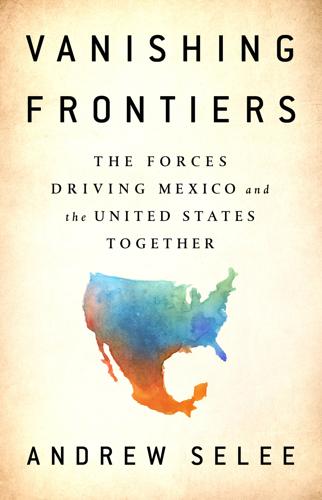
Vanishing Frontiers: The Forces Driving Mexico and the United States Together
by
Andrew Selee
Published 4 Jun 2018
These factories, known as maquiladoras, were spawned by Mexican legislation in the 1960s that allowed foreign-owned companies to set up shop in the border region to manufacture goods for the US market. They were exempt from import and export tariffs and could hire Mexican workers at a fraction of the cost of US labor. The maquiladora program had been designed to create job growth in the border region after the US government suspended the bracero program, a migrant guest worker program begun during World War II to bring Mexican farmworkers into the United States for short periods. When that program ended in 1964, the flow of Mexicans to the United States continued, but some stayed in border towns and cities to work in the maquiladoras. By the late 1990s, Tijuana had somewhere between 1.5 million and 2 million residents, making it Mexico’s fourth-largest metropolitan area.
…
Index accountability, 19–20, 130, 157, 177 accreditation issues, 194–195 Advance America, 77 advanced manufacturing, shift to, 37–38, 39, 48 advertising, 210, 247, 248, 252 aerospace industry border crossing efficiency and, 46 hubs of, 62–63 and NAFTA, 55 shared production process in, 18, 23, 58, 61–63 Afghanistan war, 138, 144, 147, 148 Afro-Mexicans, 210 aging population, 196 agricultural industry farmworkers in, 36, 39, 97, 265 guest worker program for, 36 import/exports, 49–50 and NAFTA, 53, 282 ties in, 23 trade balance in, 51 Aguascalientes, Mexico, 95 Aguayo, Sergio, 278 airports border crossing and, 68, 71–72 shared, 6, 23, 28, 30, 46 Alonso, Miguel, 190 Alpek, 76 aluminum industry, 76 Amazon, 9 ambiguity, feelings of, 209, 211, 213 Ambulante, 240, 241, 243 America Móvil, 77, 89–90 American emigrants.
…
See specific officials, agencies, and issues Gruma, 85, 90 Grupo Alfa, 85, 113–115, 116, 130 Grupo Electra, 77 Guadalajara, Mexico cost of living, 100 expatriates in, 206 innovation culture in, 104–107 manufacturing in, 98, 103 reinvention of, 98–99 technology innovation in, 23, 95, 97, 98–100, 101–102, 103–104, 107, 272 Guerrero, Vicente, 210 Guerrero violence, 19, 180 guest worker program, 36, 39 Guillén, Tonatiuh, 43 Gulf Cartel, 137, 138, 172, 176 gun sales/smuggling, 143, 150, 176 Gutiérrez, José Luis, 219–220, 221 Gutiérrez, Mak, 105 Gutiérrez, Raúl, 73, 74, 75, 86 Guzmán, “Chapo,” 137, 166, 176–177 Ha*Ash, 218, 219 Hackers/Founders, 105 Hadley, Steven, 148 Hayek, Salma, 227, 232, 236, 242, 253 Hazelton, Pennsylvania affiliation with, 7–8 crime in, 10–11 decline of, 8 demographics of, changes in, 9, 12–13, 187 employment in, 8, 9 ethnic history of, 2 immigration and, 1, 2–3, 4, 8, 185, 187 investment in, and nearby communities, 4–5, 9, 14, 76, 84, 85, 89 as a microcosm of US-Mexico relations, 20–21 migrant journey to, from Atzompa, 15–16 population in, 8, 9 public-private partnerships in, 14 restriction of immigration in, 2, 9 revitalization of, 8–9, 13–14, 21, 185, 201 start-ups in, expansion of, 9–10, 185 unifying, attempts at, 11–12, 14 voters in, and national elections, 21 Hazelton Integration Project (HIP), 11–12, 14 health care accessibility of, 18, 66, 205, 206 affordability of, 205 improvement in, 66 investment in, 189, 191 provision of, 204–205 quality of, 205 health-care technology, 103 heavy manufacturing, 63 Heineken, 86–87 Hernández, Roberto, 158–159, 159–160, 161–162, 163, 243 heroin, 19, 74, 137, 143, 158, 178–179, 180 Hewlett Foundation, 160, 162 Hewlett-Packard (HP), 95, 98, 99 high-tech industries attracting, 13–14 pairing low-tech and, 96 supply chains for, 30 See also technology sector hockey leagues, 248 holiday celebrations, 194 Hollywood production/studios, 6, 23, 39, 226, 228, 230, 231–232, 233, 235, 237, 238, 243 home cooking, ethnic, becoming mainstream, 260, 262 Homeland Security, Department of, 45, 134, 269 homicides immigration backlash and, 10, 11 organized crime and, 19, 31, 136, 138, 139, 142, 150, 165, 166, 168, 172, 177, 180 overall rate of, 19, 138, 150, 177, 178, 179 hospitality industry, 185 How to Be a Latin Lover (film), 227 Hughes, Langston, 208–209 Human Development Report, 241 Hunt, Hunter, 125, 127 Hunt Consolidated Energy, 125, 127 Hurricane Katrina assistance, 133–135, 141, 150, 151, 171 hydropower, 123, 126 IBM, 95, 98, 99 IEnova, 120, 122, 124 illegal drugs, demand for, 19, 21, 143, 149–150, 176, 178, 180, 274 See also drug addiction/overdoses; drug trade/trafficking illegal immigration amnesty for, 265 and the border wall, 22 concerns over, 186, 190 crackdown on, 269 decline in, 3–4, 186, 190, 191, 282 deterring, common goal of, 200 documentation issues facing, 193 new flows of, first line of defense in, 199–200 protest against, 2 Imcine, 228, 229 immigrant roots, 209, 210 immigration backlash against, 2, 10, 11 decline in, 3, 20, 187, 190–191, 195, 196, 198, 202, 255 as embedded, 186 fears associated with, 21, 185–186 films involving, 226–227, 228, 230, 232 height of, 190 job loss driving, 63, 190 mass, ending of, 4 new wave of, 1 positive views toward, 22, 186, 283 poverty driving, 2, 15, 189, 198 previous waves of, 9, 13, 186, 188 profound influence of, 282–283 restrictions on, focusing on, 2, 10 shifting face of, 4, 188, 198, 200, 201 and social integration, 186–187 See also illegal immigration; returning migrants immigration debate, 2–3, 4, 22, 188 immigration reform, 147, 265 Immigration Reform and Control Act, 265 imports agricultural, 49–50 border crossing and, 71 natural gas, 119, 124 oil, 124, 131 and tariffs, 36 See also exports; trade incarceration rates, 10 income disparity/inequality, 65, 275, 277 See also poverty income growth, 18, 66, 196, 248 See also economic growth; middle class independent filmmaking, 6, 228, 233, 234, 238, 239, 240, 241–242, 243–244, 254 See also documentary film Independents, 22, 275 India call centers and, 193 emigration from, 4 film industry and, 225, 227 outsourcing IT to, issue with, 94 technology sector in, 98 venture capital and, 107 indigenous roots, 209–210 industrial sector declining employment in, 59, 60, 275 development of, 8–9 shared production in, 58, 282 trade balance in, 51 See also specific industries informal sector, 66 Infosys, 95 infrastructure, 205 innovation culture, 104–107 innovation economy, 21, 23, 30, 39, 67 innovation labs/hubs, 39, 110–111 See also Guadalajara, Mexico; Silicon Valley, California innovation meet-ups, 104, 105–106 institution building, 157, 169, 180 Instructions Not Included (film), 226–227 Intel, 95, 99 intelligence model, 175 International Revolutionary Party (PRI), 114 investment matching, 189–190 as part of overall expansion, 90, 91 portfolio, 76 rise in, 4–5, 9, 74, 75–79, 80–82, 84, 88–89, 270, 271 in San Diego-Tijuana bridge, 28 See also venture capital investment laws, 109–110 investment risk, 111–112 Iraq war, 144, 147, 148 Ireland, emigration from, 2, 9, 13, 186, 197 Italy emigrants from, 1, 2, 8, 9, 13, 33, 39, 43, 186, 197, 260 movie market in, 224 Jalisco New Generation Cartel, 177 Jane the Virgin (TV show), 253 Japan, 5, 28, 47, 50 Jeep, 55, 57 Jesse & Joy, 215–216 Jiménez, Efraín, 188–189, 192, 201 Jinich, Pati, 260 jobs.

Arrival City
by
Doug Saunders
Published 22 Mar 2011
And yet, by the time it was passed, pressure from the Chamber of Commerce and agriculture lobbies had transformed it into a mass amnesty that provided legal citizenship to almost three million “illegals,” combined with a new program allowing low-skill migrants to enter under a guest-worker program demanded by agricultural industries in the western states. This guest-worker program eventually led to its own mass amnesty. An effort in the next decade by the conservative House of Representatives, led by Newt Gingrich, to reverse the effects of the IRCA, this time backed by widespread public pressure against “illegals,” had a similar result: The 1990s saw more immigration to the United States from Latin America than in any other decade in U.S. history, a surge of legal and illegal migration totalling 31 million people.
…
Such restrictions failed partly for the economic and political reasons described above, but also for a third reason: When immigrants are brought over without their networks of relatives and village neighbors, they are more likely to become isolated and unsocialized, to fall into criminality or social conservatism. This happens when family-reunification migration is restricted or when countries rely on temporary guest-worker programs to attract low-skilled workers without their families, as Germany did in the 1970s and Canada and Australia are attempting today. When settlement of families is restricted, arrival cities and their supportive networks are unable to take shape, and behavior changes. A study by Dennis Broeders and Godfried Engbersen at Erasmus University, in Rotterdam, examined immigrants forbidden to bring over relatives: Without family networks to support them, the migrants were forced into a “dependence on informal, and increasingly criminal, networks and institutions.”19 Arranged marriages, often to a cousin from a distant village whom the primary-immigrant spouse hadn’t met, became commonplace, even when the migrants are from countries such as Bangladesh or Turkey, where these practices are dying out.

The Politics Industry: How Political Innovation Can Break Partisan Gridlock and Save Our Democracy
by
Katherine M. Gehl
and
Michael E. Porter
Published 14 Sep 2020
Bush’s presidency, the door seemed open for a bipartisan deal.14 A bill cosponsored by Senators John McCain and Ted Kennedy passed in the Senate in 2006 with the backing of almost every Democrat and nearly half of the Republicans.15 Unfortunately, it died in the House when Republican Speaker Dennis Hastert invoked his Hastert Rule, refusing to hold a vote on the bill—already passed by the Senate—out of fear that compromising would taint the Republicans’ ideological purity, disappoint their partisan and special interest bases, and reduce their chances in the midterms.16 Later that year when the Democrats captured Congress anyway, hope was renewed that progress could be made on immigration. The Senate took up a retooled version of the McCain-Kennedy bill in early 2007, but the proposed legislation involved compromises that upset some of each side’s core constituents. Conservative radio was outraged over “amnesty” for “illegals,” while the AFL-CIO protested guest-worker programs. To make it through the Senate, the bill needed to avoid amendments championed by the disgruntled groups (i.e., remain similar to what had passed only months earlier). The inclusion of these so-called poison pills would ultimately kill the bill.17 When the bill came to the Senate floor in June, one such poison-pill amendment was offered by then freshman Senator Obama, who had months earlier launched his campaign for president.
…
The inclusion of these so-called poison pills would ultimately kill the bill.17 When the bill came to the Senate floor in June, one such poison-pill amendment was offered by then freshman Senator Obama, who had months earlier launched his campaign for president. Fortunately, the amendment was rejected.18 But Obama quickly backed another poison pill supported by organized labor to sunset a popular Republican idea to expand the guest-worker program.19 The amendment ultimately passed—by just one vote.20 Immigration reform was dead. Both parties had killed it. While it was a major defeat for the country, the failure of immigration reform was a tactical win for Obama. In today’s politics, taking ideological stands at the expense of actual legislative action can be smart strategy.

Active Measures: The Secret History of Disinformation and Political Warfare
by
Thomas Rid
Wagner, although he was in debt, was still a conservative Bavarian politician, and working for Communists would have been a bridge too far for him.58 Wagner took the money and voted for the Americans. Or so he thought. Brandt survived the vote, and Ostpolitik was saved. Two years after the HVA’s remarkable election interference, the X launched another timeless disinformation campaign: it manufactured far-right, neo-Fascist sentiments in West Germany in response to the government’s guest worker program of the 1970s. The operation, known as RIGAS, was launched with a two-page flyer impersonating a far-right West German party, the Deutsche Volksunion (DVU).59 The goals were to “aggravate the relations between the Federal Republic, Turkey, and Greece”; to “internationally discredit the right-wingers in the Federal Republic”; and to “provoke action by foreign workers.”60 The pamphlet’s two paragraphs, printed under the headline “Deutsche, wehrt euch!”
…
Fish Committee Fitzgerald, Ella Fleissmann, Georg “Flying Psychoneurosis, The” (Bräunig) FM 30-31B; AM and; classified information in; Covert Action Information Bulletin printing; focus of; forgery and; in Italy; in Philippines; Schaap on authenticity of; Service A and; in Spain Ford, Gerald Ford Foundation Foreign Affairs (magazine) Foreign Intelligence Service (SVR) forgery; CEC attack and; CIA and; deniability and; digital leaks and; distrust spread by; Dulles Memorandum and; exposure and spread of; FM 30-31B and; Helms on; Kampfverband and; KGB and; of KgU; KKK leaflets and; LCCASSOCK and; Marbach and; NEPTUN operation and; neutron bomb and; nuclear war threats and; OPLAN 10-1 and; The Penkovsky Papers and; Prats’s diary; Protocols of the Elders of Zion and; Protsyk’s emails and; Rockefeller letter; of Schlagzeug by KGB; spotting; Tanaka Memorial as; Whalen documents and Forsberg, Randall Forward, The Foucault, Michel France Nouvelle Franceschi-Bicchierai, Lorenzo Frankfurter Allgemeine Zeitung Frau, Die Frau von Heute, Die free press Freie Bauer, Der Frey, Gerhard Friedenskampf, see peacewar Fruck, Hans FSB Fuchs, Jürgen G Gailat, Kurt Gaines, Stanley Gates, Robert Gawker Gay Community News Gehlen, Reinhard Geist und Leben Generale, Die (documentary) Generals for Peace Genscher, Hans-Dietrich Germany: AM in; Berlin Airlift and; Berlin Tunnel and; BOB in; election interference in; FALLEX 62 and; guest worker program in; hate crimes legislation in; special camps in; suicides in security establishment of; UfJ and; see also Bundesnachrichtendienst; Hauptverwaltung Aufklärung; LCCASSOCK; Stasi Gevorkyan, Pavel Gibney, Frank Gizunov, Sergey Glavlit Global War Plan for Clandestine Operations, of U.S. Gold, Stephen Gonzalez, Fernando Goodman, Benny Google Gorbachev, Mikhail Gordievsky, Oleg GPU (State Political Directorate) graffiti, anti-Semitic Grapfen, T.
…
GRU: Assange and; Clinton campaign hacked by; DCCC hacked by; DCLeaks and; Guccifer 2.0 and; headquarters of; IRA and; NotPetya attack and; Secureworks exposing; state-level election interference by; Unit 26165 of; Unit 74455 of; WikiLeaks and; see also Internet Research Agency Guardian, The Guccifer 2.0 guerrilla units, U.S. guest worker program Guillaume, Günter H hacking operations: against Clinton; CyberCaliphate and; DCCC and; detecting; DNC and; Google calling out; Guccifer 2.0 and; NotPetya attack and; #OpSaudi and; Podesta’s emails and; SOFACY; see also Anonymous; digital leaks Hahn, Walter Hansapank Harare Sunday Mail Harbottle, Michael Harvey, William King Hatcher, Kyle hate crimes Hatfield, Mark Hauptverwaltung Aufklärung (HVA); Active Measures of Eastern Intelligence Services report and; Arbeitskreis and; archival records of; DENVER operation and; Devil and His Dart and; disinformation focus of; effectiveness of; Fleissmann and; Generals for Peace and; Headquarters Germany and; Helms’s accusations against; Kampfverband für Unabhängiges Deutschland and; Die Neue Nachhut project of; nuclear espionage activities of; peacewar and; RACER operation and; RIGAS operation and; secrecy of; StB cooperation with; swastika vandalism absence of; on youth values shifts; ZEUS operation and; see also Department X Headquarters Germany (Eichner and Dobbert) Hearst, William Randolph, Jr.
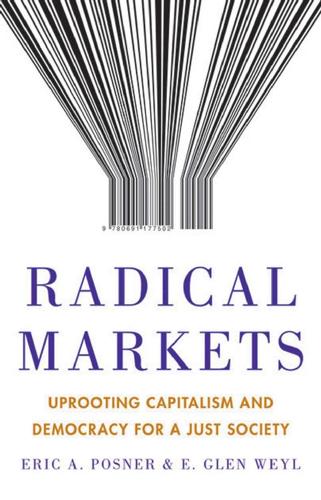
Radical Markets: Uprooting Capitalism and Democracy for a Just Society
by
Eric Posner
and
E. Weyl
Published 14 May 2018
A few studies, relying on anecdotal data, do document some instances of abuse, but the problem is that existing programs are not structured as guest worker programs. See Janie A. Chuang, The U.S. Au Pair Program: Labor Exploitation and the Myth of Cultural Exchange, 36 Harvard Journal of Law and Gender 269 (2013); Daniel Costa, Guestworker Diplomacy, Economic Policy Institute Briefing Paper No. 317 (July 14, 2011), http://www.epi.org/files/2011/BriefingPaper317.pdf. Instead, they are structured as cultural exchange programs, which then are manipulated by employers and private intermediary institutions who arrange for migration. The abuse arises from this mismatch; a properly structured guest worker program would have more protections. 33.
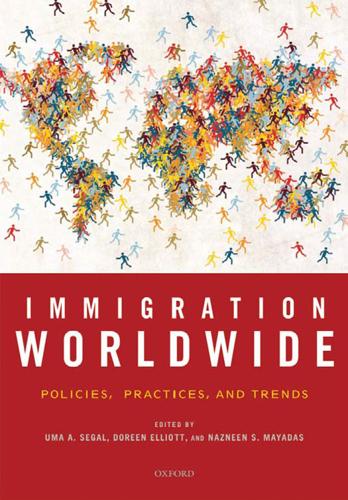
Immigration worldwide: policies, practices, and trends
by
Uma Anand Segal
,
Doreen Elliott
and
Nazneen S. Mayadas
Published 19 Jan 2010
The President and Congress determine the annual ceiling and country distributions (ceilings have ranged from 50,000–90,000). 1986: The Immigration Reform and Control Act (IRCA) legalized several undocumented immigrants but made it unlawful to hire undocumented workers. 1990: The Immigration Act of 1990 increased the annual immigrant limit to 700,000 and established the Immigrant Investor Program. 1996: Welfare Reform ended many cash and medical assistance programs for most legal immigrants. 1996: The Illegal Immigration Reform and Immigrant Responsibility Act (IIRIRA) expanded enforcement operations of the Immigration and Naturalization Service. 2001: The USA Patriot Act, in response to the September 11, 2001, terror attacks on New York and Washington, DC, gives federal officials greater power to intercept national and international communications. The Comprehensive Immigration Reform Act of 2007 was a bill that focused on managing unauthorized migration, but failed to pass the House. Its primary components were increased border security, creation of a guest worker program, a path to citizenship for undocumented workers, worksite enforcement, and criminal penalties for those continuing to reside illegally in the country. While the bill did not pass, the issues remain in the forefront of concern. Demographic Trends Newcomers to the United States enter under a variety of conditions.
…
Mail-order brides are usually women from developing countries who register with a catalog or website their intent to marry foreign men. Usually there is no period of courtship, and marriages take place in absentia, with the man having ‘‘shopped’’ for the wife who best fits his needs. These women can enter the country legally as wives of U.S. citizens. Under continuing discussion is a guest worker program that will allow temporary workers to enter the country for a period to assume jobs for which U.S. employers are unable to find native employees. While this may appear to be a novel idea, it has long been a part of the cross-border movement for Mexican workers who have entered the United States for seasonal work and returned home at the end of the season.
…
The ongoing immigration debate juggles arguments regarding the assets newcomers bring to the country with those about the drains they place on the infrastructure, and the country is divided on the current net worth of immigration in the twenty-first century. The Immigrant Workforce Recent foci on immigration reform and the guest worker program have drawn attention to undocumented workers. One must bear in mind in all deliberations that of the 34 million documented immigrants in the United States in 2004, over 27 million were between the ages of 16 and 65 years, and the majority of them were in the workforce and across the occupational structure (Table 3-6).

A Line in the Tar Sands: Struggles for Environmental Justice
by
Tony Weis
and
Joshua Kahn Russell
Published 14 Oct 2014
This shift is most pronounced in resource-extractive economies, such as in the provinces of British Columbia and Alberta, where an entire petro-economy relies on the exploitable labour of migrant workers both in oil fields and in the associated service sector. Temporary workers are therefore a state-sanctioned federal program of indentured labour. They are similar to the US’s “guest worker programs.” In a number of bilateral meetings, US representatives have looked to Canada’s long-standing migrant worker program as the model to follow because it is a perfect way to contain and manage migration—commodify a certain class of migrants for their labour, use them, exploit them, bleed them, grant them no basic services, enforce conditions of servitude, and then remove them.
…
See also Keystone XL pipeline “transit justice,” 307 Trans Mountain pipeline, 11, 91, 95 transnational corporations (TNCs), 23, 27, 114, 272; in United States, 30 Transport Workers Union (TWU), 220 treaties, 256, 258, 260–61 Treaty 6: 119, 123, 125, 268 Treaty 8: 114, 125, 268 treaty rights, 75, 81, 122–23, 271, 274, 277 treaty violations, 139–40, 260 tribal sovereignty, 243 Trinidad and Tobago, “extreme” tar sands extraction in, 103–4 Trumka, Richard, 218, 223–24, 225 Tutu, Archbishop Desmond, 56 Tyee, The, 60 UK Tar Sands Network (UKTSN), 207–16, 292 unemployment, 125, 233, 303, 305 Unifor, 79 Unist’ot’en people, 16, 158–59, 260, 293 United Arab Emirates (UAE), 29 United Church of Christ: Fauntroy report, 67; Toxic Wastes and Race in the United States, 67 United Kingdom: Canada House protest, 208–9; Canadian embassy in, 57; grassroots activism opposing tar sands in, 55; oil imports from, 31; opposition to tar sands in, 207–16; unbuilt wind farms in, 269 United Mine Workers of America (UMW), 218 United Nations, 42, 114, 248, 267; Convention on Biological Diversity, 121; Copenhagen ministerial negotiations (2009), 167–68, 171, 209, 310–12; Declaration on the Rights of Indigenous Peoples, 12, 122, 251, 257, 268; Green Jobs report, 302; Human Rights Committee, 114; International Covenant on Civil and Political Rights, 114; Working Towards a Balanced and Inclusive Green Economy, 300–301 United Nations Environment Programme (UNEP), 302, 353n10; Towards a Green Economy, 300 United States, 6, 42, 78; as “addicted to oil,” 181; Agency for Toxic Substances and Disease Registry, 200; Bureau of Land Management, 315; Canadian lobbying of tar sands in, 59–63; Canadian oil as part of solution to energy security in, 30; civil rights movement, 75, 251; Clean Air Act, 283; climate movement in, 167–69, 243, 311; climate policy in, 244–45, 318; domestic gas prices in, 233; Endangered Species Act, 283; Energy Information Administration, 47; energy market, 24; ENGOs in, 310; Environmental Defense Fund, 283; Environmental Protection Agency (EP A), 198, 203; fight over Keystone XL in, 78, 166–80; forced migration to, 89; guest worker programs in, 85; Indian Energy Title V campaign, 242–43; labour movement and climate change in, 217–25; military industrial complex, 336n8; National Energy Policy Development Group, 30; National Institute of Environmental Health Sciences, 202; National Transportation Safety Board (NTSB), 198–99; Natural Resources Defense Council, 175, 221, 230, 242, 283; as net exporter of refined petroleum, 314; Oil Protection Act, 199; Oil Sands Advocacy Strategy, 59; oil shale exploration and experimentation in, 100; Pipeline and Hazardous Materials Safety Administration (PHMSA), 190, 198–99, 205; refining capacity of West Coast of, 95; tribal comtar munities in, 230–31, 243, 246; unemployment in, 233 uranium, 125, 241, 315–16 Urbaniak, Darek, 59 US Public Interest Research Group, 244 Utah, 315, 325n46 Utica shale formation, 283 Valero Energy Corporation, 210, 234 Velshi, Alykhan, 50–51 Venezuela, 6, 33; Bolivarian Revolution, 101–2; “extreme” tar sands extraction in, 101–2 Vermont, 315 Victims of Chemical Valley, 144 violence: against Indigenous women, 255; against land, 96, 252, 255; increases in rates of, 255; symbolic vs. real, 44; systemic, 263 volatile organic compounds, emissions of, 32 Walpole Island Native reserve (Bkejwanong First Nation), 145, 241 “war in the woods,” 70–71 “war of position,” 39 Warren County (North Carolina), 66–67 water: diversion of, 9, 129; pollution, 9, 51, 114, 116, 119–20, 128, 136, 181, 196, 255, 268, 315; use of in extraction, 9, 32, 33, 100, 230, 281 Wawanosh, Joshua, 139 Waxman, Henry, 60, 62 Waxman-Markey climate legislation, 224 wealth accumulation, vs. environmental and social protection, 38 wealth polarization, 73 web-based resources, list of, 19 “Week of Action to Stop Tar Sands Profiteers,” 189 West, Ben, 164 Western Mining Action Network, 168 West Virginia, 314 wetland, destruction of, 9 Wet’suwet’en Nation, 157, 260, 293; C’ihlts’ehkhyu (Big Frog Clan), 158 white supremacy, 96, 265 Whitley, David, 192 Wikileaks, 56 Wildfire Project, 322n3 wildlife, declines in and threats to, 116, 120–21, 254, 295, 300 wind-powered generation, 314 Winnsboro Tree Blockade, 186–88 Wisconsin: Clean Energy Jobs Act, 61–62 women: grassroots, 192, 277; Indigenous, 193, 209, 213, 242, 246, 251–52, 255, 261–63 Wong, Kent, 97 Wood Buffalo National Park, 130 Woodward, Ron, 130 workers’ rights, 303, 306 World Bank, 90, 303 World Trade Organization, 311 Worldwatch Institute, 353n10 World Wildlife Fund, 270 xenophobia, 92–93 Yearwood Jr., Rev.

Economic Dignity
by
Gene Sperling
Published 14 Sep 2020
. ___ (2018), slip op. at 17 (Ginsburg, J., dissenting). 98. Pollock v. Williams, 322 U.S. 4, 17–18 (1944). 99. 8 U.S.C. § 1101(a)(15)(H)(ii)(a). 100. 20 C.F.R. § 655.1310(b). 101. Gosia Wozniacka, “The H-2A Guest Worker Program Has Ballooned in Size, but Both Farmers and Workers Want It Fixed,” Civil Eats, July 16, 2019, https://civileats.com/2019/07/16/the-h-2a-guest-worker-program-has-ballooned-in-size-but-both-farmers-and-workers-want-it-fixed. 102. U.S. Government Accountability Office, H-2A and H-2B Visa Programs: Increased Protections Needed for Foreign Workers, GAO-15-154 (Washington, DC: GAO, March 2015), 37–38, https://www.gao.gov/assets/690/684985.pdf. 103.
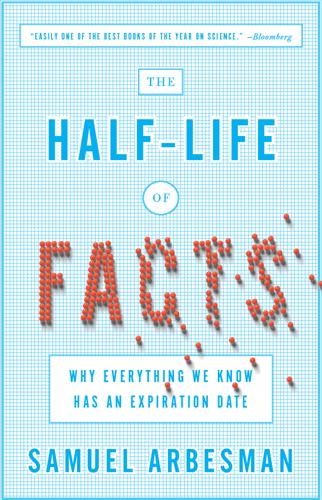
The Half-Life of Facts: Why Everything We Know Has an Expiration Date
by
Samuel Arbesman
Published 31 Aug 2012
Lant Pritchett, a professor of international development at Harvard’s Kennedy School of Government, is all too aware of this. In the field of international development there are many sacred cows, and challenges to them are not met with as much cool and calculating logic as one might wish. Pritchett recently proposed an intriguing idea to help developing countries: create lots of guest worker programs. But is everyone simply weighing its merits? Not exactly. Pritchett argues that a more apt way to describe how these ideas are adopted is that they often follow this trajectory: “Crazy. Crazy. Crazy. Obvious.” Plot that on a graph, and you’ve got a phase transition, but this time it’s one about how ideas are accepted and adopted.

Open: The Progressive Case for Free Trade, Immigration, and Global Capital
by
Kimberly Clausing
Published 4 Mar 2019
Immigration from Mexico is on a downward trend, and growers watch with dismay as their crops rot in place. The shortage presents employment opportunities that very few American workers are willing to take. A 2013 paper by Michael Clemens studied the North Carolina Growers Association (NCGA). Before using the guest worker program (which offers foreign workers seasonal contracts), the NCGA must prove it has made an effort to recruit Americans. In the years 1998 to 2012, when farms needed thousands of workers each season, applications from US-born workers never surpassed 268. And in that peak year, 2011, only seven Americans stayed for the whole growing season—while their Mexican counterparts boasted a retention rate of 90 percent.2 ________________________ 1.
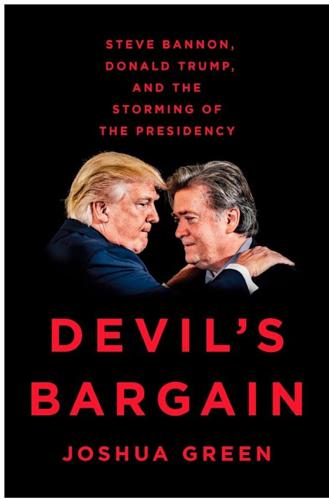
Devil's Bargain: Steve Bannon, Donald Trump, and the Storming of the Presidency
by
Joshua Green
Published 17 Jul 2017
Stunned by a loss few of them had anticipated, most prominent Republicans concluded that passing comprehensive immigration reform was an existential imperative for the party. In early 2013, the vehicle to do so took shape in what became known as the “Gang of Eight” bill, a bipartisan reform measure led by eight senators that would provide a path to citizenship for the now 11 million immigrants living illegally in the United States, while enlarging guest-worker programs for low-skilled jobs in industries such as agriculture. In what seemed a positive omen, the Gang of Eight bill had the added designation of being a vehicle for the presidential ambitions of Senator Marco Rubio of Florida, the telegenic young Cuban American then considered to be the GOP’s brightest rising star.

Inside the Robot Kingdom: Japan, Mechatronics and the Coming Robotopia
by
Frederik L. Schodt
Published 31 Mar 1988
Speaking slightly more elegantly and to the point, Waseda University scientist Ichiro Kato elaborated, "We have an unwritten law that only allows Japanese residents to work here. But this is not the case in other countries, which gives them access to far more plentiful human resources."13 Unlike the United States, Europe, or even the oil nations of the Middle East, postwar Japan has never resorted to foreign "guest worker" programs, immigration programs, or the use of illegal aliens to solve its labor shortages. Prior to 1945, it is true that thousands of Koreans were brought to Japan, often as forced labor, but their descendants (who form nearly 80 percent of Japan's less-than-1-percent minority population) are still victims of discrimination and regarded by some as a blemish on an otherwise pure racial complexion.

The Globalization Paradox: Democracy and the Future of the World Economy
by
Dani Rodrik
Published 23 Dec 2010
And they fail to recognize that workers from developing nations would queue up in droves for temporary jobs abroad, given their alternatives. However, two of the objections deserve closer scrutiny. The first is that it will be difficult, if not impossible, to enforce the return of foreign workers to their home countries after their permits expire. This is a legitimate concern since many “guest worker” programs have in practice produced permanent immigrants, sometimes creating a large underclass of foreign-born residents left in ambiguous status (as in Germany and many other countries of Europe). On the other hand, past programs typically have offered few incentives for “temporary” workers to return, relying on little more than their willingness to abide by the terms of their visa.

Gaming the Vote: Why Elections Aren't Fair (And What We Can Do About It)
by
William Poundstone
Published 5 Feb 2008
But, he admitted, "I don't know if they're doing it for me or as a tactic against Bilbray:' The mystery was solved when ads touting Griffith began running on conservative talk radio, saying in part: Think lobbyist Brian Bilbray's a conservative when it comes to immigration? Think again ... Lobbyist Bilbray isn't the candidate to secure our borders. You have a choice. Independent William Griffith is en- 121 GAMING THE VOTE dorsed by the San Diego Minutemen and San Diego Border Alert because he opposes guest worker programs, amnesty, and the hiring of illegal immigrants. Francine Busby supports John McCain's position on immigration-stronger enforcement at the border, better support for border agents, and no amnesty. When it comes to immigration, don't expect lobbyist Brian Bilbray to fix Washington, or fix our borders.

The Price of Everything: And the Hidden Logic of Value
by
Eduardo Porter
Published 4 Jan 2011
In 2006, as the United States Congress debated an overhaul of immigration law, I met Faylene Whitaker, a farmer who grew tobacco, tomatoes, and other crops in the Piedmont area of North Carolina. Whitaker was concerned about the high cost of employing immigrant workers through the prevailing legal channels and wanted a better deal. “We would rather use legal workers,” she said. But “if we don’t get a reasonable guest worker program, we are going to hire illegals.” The visa set a minimum wage by comparison with other farm wages in the area. At the time it was about to rise to about $8.51 an hour from $8.24. Illegal workers, by contrast, could be had for less than $6.50. ILLEGAL IMMIGRANTS, OF course, want the $6.50-an-hour jobs.
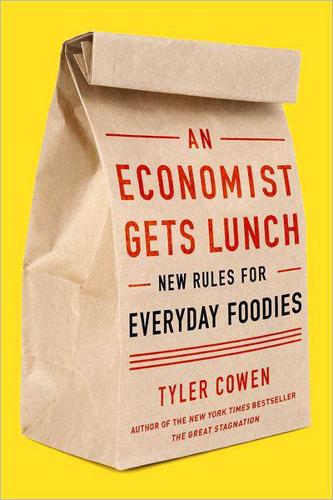
An Economist Gets Lunch: New Rules for Everyday Foodies
by
Tyler Cowen
Published 11 Apr 2012
Beware: Most of the Chinese restaurants in Germany are too influenced by the blandness and starchiness of a lot of German food. Turkish food in Germany is overrated, and it is a partial exception to the principle that you should look for lots of competition in an ethnic cuisine. There are a lot of Turkish restaurants in Germany, in part because the Turks are Germany’s largest ethnic minority, due to decades of guest-worker programs. Some of the Turkish restaurants are quite good, but I don’t recommend random selection. You need to know where you are going. The underlying problem has to do with dysfunctional German fast food. McDonald’s never achieved the foothold in Germany that it has in the United States, in part because Germans are skeptical about the quality of the cuisine, in part because many Germans view it as a symbol of Americanization, and also, in part, because compared to the United States, German family eating is less centered around the child.
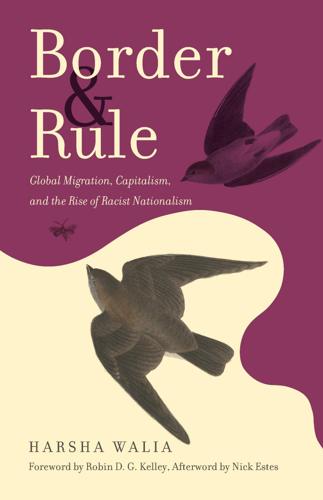
Border and Rule: Global Migration, Capitalism, and the Rise of Racist Nationalism
by
Harsha Walia
Published 9 Feb 2021
Of the tens of thousands of farmworkers coming annually to Canada, for instance, 98 percent return to their place of origin upon completion of the seasonal contract, hoping to legally return the following season; they do not remain and become undocumented in Canada.15 Kerry Preibisch argues this forced rotation is the reason for Canada’s agricultural migrant worker program’s international reputation: “This high degree of ‘circularity’ in policy-speak—or cyclical labor migration that does not result in permanent settlement—is a fundamental benchmark for which the ‘success’ of guest-worker programs is measured.”16 Liberal discussions about reforming Canada’s migrant worker programs tend to be limited to piecemeal protections for migrant workers without analyzing how capitalism, imperialism, exclusion, and criminalization all shape temporary migration to simultaneously manage labor pools and control migration flows.

Arriving Today: From Factory to Front Door -- Why Everything Has Changed About How and What We Buy
by
Christopher Mims
Published 13 Sep 2021
The flexibility of humans means that keeping some around, no matter how automated a facility, allows companies to rotate employees through whatever job they’re most needed for at any given time. There is also, of course, the possibility that human labor becomes cheap again. “My existential threat as a robotics company is comprehensive immigration reform with a guest worker program,” says Erik. “But we’re further away from immigration reform than ever in this country, so what is a labor-constrained operator to do?” For now, across the entire e-commerce industry, the answer is hire, hire, and hire some more. The boom in employment in e-commerce has meant that the industry has, as a whole, created more jobs than have been lost in physical retail, at least from the period of around 2007 until 2017.

Words That Work: It's Not What You Say, It's What People Hear
by
Dr. Frank Luntz
Published 2 Jan 2007
NEVER SAY: Undocumented workers/aliens INSTEAD SAY: Illegal immigrants INSTEAD SAY: Border security This linguistic distinction may prove to be the political battle of the decade. The label used to describe those who enter America illegally determines the attitudes people have toward them. Those supportive of a guest worker program that would allow illegal immigrants to remain in the country tend to label these people “undocumented workers” because it suggests legitimate employees who simply don’t have the right paperwork, while those who want to deport these same individuals use the term “illegal aliens” because alien has the most negative connotations.
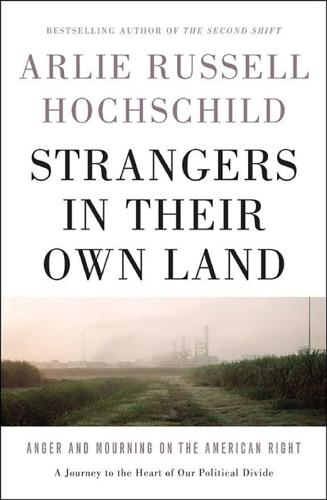
Strangers in Their Own Land: Anger and Mourning on the American Right
by
Arlie Russell Hochschild
Published 5 Sep 2016
Also see “Governor Bobby Jindal Says Americans Want a ‘Hostile Takeover’ of Washington,” TeaParty.org, September 16, 2014, http://www.teaparty.org/gov-bobby-jindal-says-americans-want-hostile-takeover-washington-55848. 47among them nurses, nurse’s aides, medical technicians, public school teachers In 2007, 350 Filipino teachers were brought in by Universal Placement International to teach in public schools under the H-1B Guest Worker program. But they were forced to pay an initial $16,000 fee. Most had to borrow the money and were charged monthly interest. UPI took away their passports and visas until they repaid the loan. The contracts were later ruled illegal, and the agency officials were jailed for human trafficking. Claire Gordon, “Filipino Workers Kept as Slaves in Louisiana, Lawsuit Charges,” AOL Jobs, November 15, 2011, http://jobs.aol.com/article/2011/11/15/filipino-workers-kept-as-slaves-in-louisiana-according-to-lawsu/20106284; “Lawsuit: Filipino Teachers Defrauded in International Labor Trafficking Scheme,” LA.AFT.org, http://la.aft.org/news/lawsuit-filipino-teachers-defrauded-international-labor-trafficking-scheme. 48won a score of 0 on the League of Conservation Voters scorecard “David Vitter on Environment,” On the Issues (a website that describes congressional bills and candidate’s votes across a range of issues), http://www.ontheissues.org/Domestic/David_Vitter_Environment.htm. 49for the affluent, a journey to the Swiss Alps Svetlana Boym, The Future of Nostalgia (New York: Basic Books, 2001).
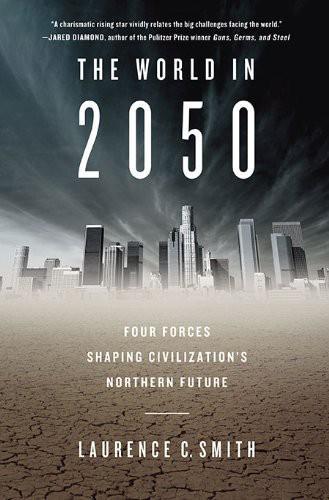
The World in 2050: Four Forces Shaping Civilization's Northern Future
by
Laurence C. Smith
Published 22 Sep 2010
French and British trappers and traders arrived in the New World; Russian Cossacks surged east through Siberia all the way to the Pacific Ocean. In the nineteenth and twentieth centuries almost three million Scandinavians emigrated to the American Midwest and rural Canada. Today, there are Nigerians moving to Fort McMurray, Iraqis to Stockholm, Filipinos to Yellowknife, and Azerbaijanis to Noril’sk. There are growing cities, guest-worker programs, and multinational corporations. As I drove across the Arctic Circle in my rental car, just a few hours north of Fairbanks, it was with a Starbucks Venti latte still clutched in my hand. The latest invasions have begun. So, unlike the Arctic Ocean seafloor, even our northernmost landmasses are hardly a vacant frontier.

The Wrecking Crew: How Conservatives Rule
by
Thomas Frank
Published 5 Aug 2008
Thus did a hired gun for apartheid South Africa remake himself as a hair-trigger antiracist, fighting colonialism and deploring bigotry in places where most people saw only disputes over treaties and concerns about low-wage workers. Every defense of the CNMI followed the same script. First, to enforce U.S. labor and immigration laws on this U.S. commonwealth, as liberals wanted to do, was an act of colonialism, if not racism or genocidal fascism. Second, low taxes, low wages, and an unrestricted guest-worker program were the true components of “freedom” and also, between them, the policies that brought independence from colonial powers. Abramoff’s comments to the press about the CNMI’s cause were a fine example of the strategy. Leaving aside the denials that are a routine part of a lobbyist’s business—nope, no sweatshops here—he repeatedly flashed the anticolonialism card.

The Contrarian: Peter Thiel and Silicon Valley's Pursuit of Power
by
Max Chafkin
Published 14 Sep 2021
The policies had been embraced by Bill Clinton and George W. Bush, but Thiel saw a turning point. A year earlier, Bush had attempted to enact comprehensive immigration reform, which would have included a path to citizenship for undocumented immigrants, stepped-up border enforcement, and the addition of a guest worker program. But Bush’s effort failed, which Thiel ascribed to “an unprecedented Internet campaign that had been going on for months.” Thiel was much more familiar with this anti-immigration reform campaign than his letter let on. Over the past few years, he’d been quietly cultivating a new crop of nativist politicians, including Kris Kobach, the chairman of the Kansas Republican Party, who’d served as a lawyer for an anti-immigration group, the Federation for American Immigration Reform, or FAIR, which had been suing state governments for allowing undocumented immigrants to pay in-state college tuition rates.

Who Stole the American Dream?
by
Hedrick Smith
Published 10 Sep 2012
Competitiveness,” National Venture Capital Association, 2006, http://www.nvca.org. 5 “It makes no sense to” “Bill Gates to Congress: Let Us Hire More Foreigners,” CNET News, March 12, 2006, http://news.cnet.com. 6 No ironclad protections for Americans Morrison, interview, January 24, 2011. 7 Senior AIG executives summoned 250 Linda Kilcrease, “Problems with the H-1B Visa Expansion and T-Visas,” web post, January 8, 2008, accessed January 17, 2011. http://www.zazona.comLibrary/BrainSavers/Problems_Kilcrease.htm, and Kilcrease, letter to editor, “H-1B Visa: A Bad Idea,” Cnet, 2009, accessed April 21, 2012. 8 “After we were seated” Douglas Crouse, “Competition from Abroad,” The Daily Record, Morris County, New Jersey, May 2, 2000. http://www.programmersguild.org/archives/lib/abuse/drm20000502aig.htm. 9 Americans were being replaced by H-1B Kilcrease, “Problems with the H-1B Visa Expansion.” 10 Did not bring in any special skills William Branigan, “White Collar Visas: Back Door for Cheap Labor,” The Washington Post, October 21, 1995. 11 “This profitable company boasted Kilcrease, “Problems with the H-1B Visa Expansion.” 12 One-third of its 46,000-member workforce “Quota Quickly Filled on Visas for High-Tech Guest Workers,” The New York Times, April 5, 2007. 13 Foreign worker tide kept rising “Flaws in Guest Worker Programs Add to US Unemployment Misery,” International Business Times News, November 21, 2010. 14 Or multinational temp agencies Ron Hira and Anil Hira, Outsourcing America: The True Cost of Shipping Jobs Overseas and What Can Be Done About It, 2nd. ed. (New York: Amacom, 2008) 54–59, 158–160. “Outsourcers Are Criticized on Visa Use,” The New York Times, March 31, 2011. 15 “Tata has about 18,000 people in the U.S.”
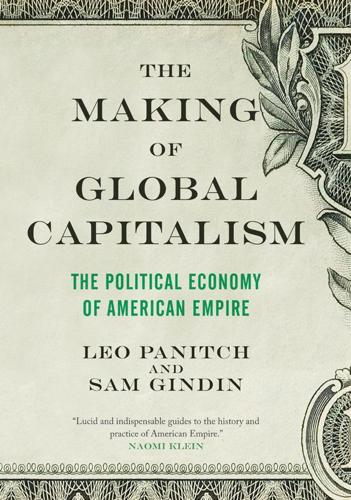
The Making of Global Capitalism
by
Leo Panitch
and
Sam Gindin
Published 8 Oct 2012
See also Jessica Gordon Nembrand, Capital Controls, Financial Regulation, and Industrial Policy in South Korea and Brazil, London: Praeger, 1996; and Peter Evans, Embedded Autonomy: States and Industrial Transformation, Princeton: Princeton University Press, 1995. 92 Even by 1980, the 120,000 jobs in the maquiladoras corresponded to less than a quarter of the half-million Mexicans that had been repatriated from the US in 1965 when it terminated its guest-worker program and began encouraging cross-border production instead. See William I. Robinson, Latin America and Global Capitalism: A Critical Globalization Perspective, Baltimore: Johns Hopkins University Press, 2008, pp. 96–101, esp. Table 2.9. Indeed, by the late 1970s the core of Mexico’s export-oriented auto industry had shifted to new assembly and engine plants built outside the maquila zones.

Days of Fire: Bush and Cheney in the White House
by
Peter Baker
Published 21 Oct 2013
It was, thought some aides, a necessary corrective to Cheney’s “last throes.” WITH SOCIAL SECURITY going nowhere, Bush wanted to take on another domestic priority, immigration. Since his days as Texas governor, he had favored a more flexible approach to illegal immigration than many in his party, advocating a guest worker program and a route to legal status for some of the ten million undocumented immigrants in the country. It was both his personal conviction and an obvious political calculation. Two days before his first inauguration, Karl Rove had declared that making inroads among Latino voters was “our mission and our goal.”